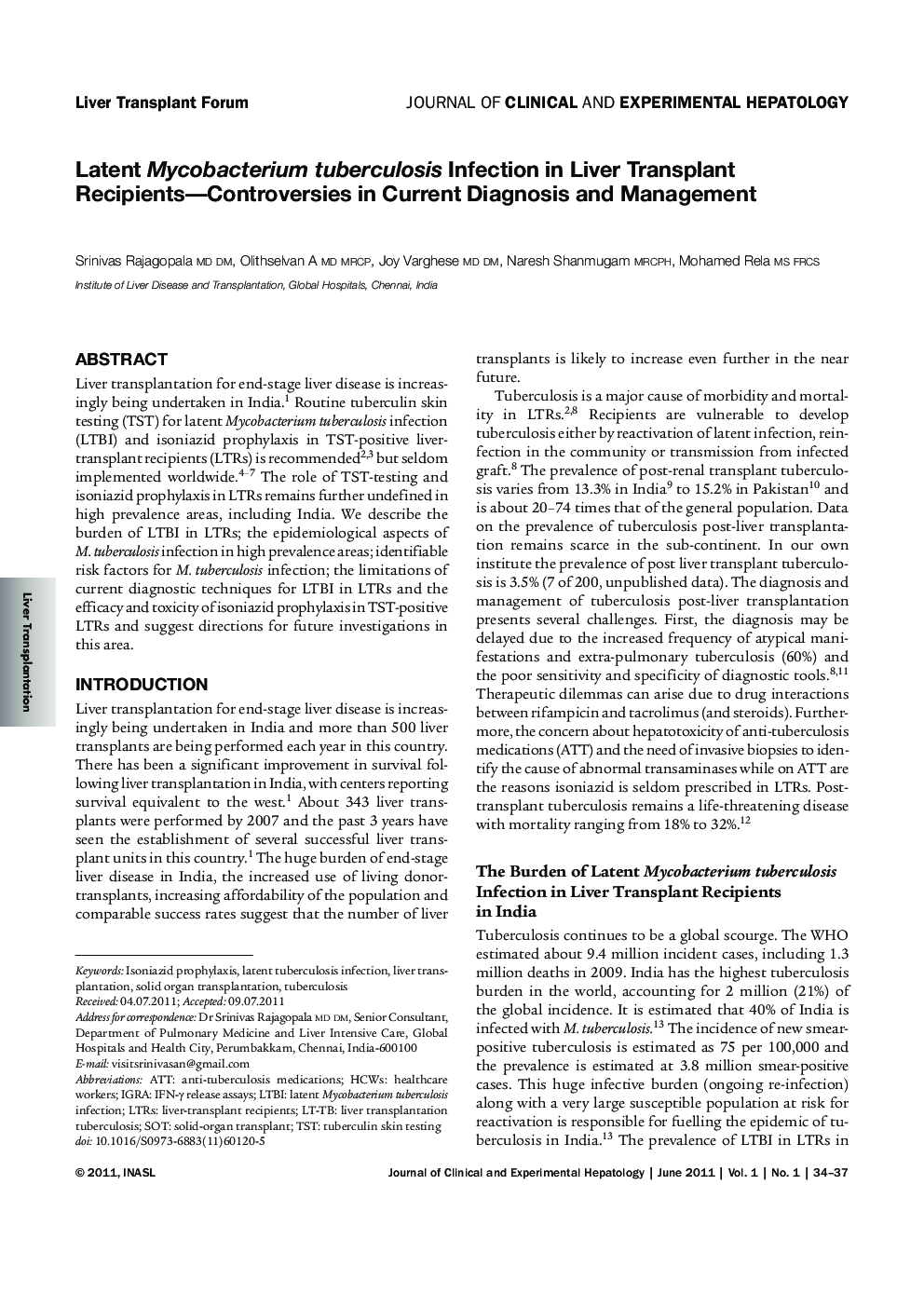| Article ID | Journal | Published Year | Pages | File Type |
|---|---|---|---|---|
| 3339266 | Journal of Clinical and Experimental Hepatology | 2011 | 4 Pages |
Liver transplantation for end-stage liver disease is increasingly being undertaken in India.1 Routine tuberculin skin testing (TST) for latent Mycobacterium tuberculosis infection (LTBI) and isoniazid prophylaxis in TST-positive liver-transplant recipients (LTRs) is recommended2,3 but seldom implemented worldwide.4–7 The role of TST-testing and isoniazid prophylaxis in LTRs remains further undefined in high prevalence areas, including India. We describe the burden of LTBI in LTRs; the epidemiological aspects of M. tuberculosis infection in high prevalence areas; identifiable risk factors for M. tuberculosis infection; the limitations of current diagnostic techniques for LTBI in LTRs and the efficacy and toxicity of isoniazid prophylaxis in TST-positive LTRs and suggest directions for future investigations in this area.
